I don't need to slow down or speed up, I'm always there on time
Don't wanna be here? Send us removal request.
Note
What makes features make a RPG? e.g. character creation, choice making etc.
I’ve seen a good number of arguments between game fans about what is and isn’t an RPG, but the actual answer might be a bit disappointing. They want to be able to point at a game in an argument and definitively say “That’s not a [insert genre here]!” And they argue about this constantly, when what they are really saying is “I don’t like [insert game here], so I am going to say it is not [insert genre here] in order to make my dislike seem more legitimate.” While a lot of hardcore (and argumentative) players want genres to have a hard and clear set of criteria, the reality is that they aren’t. To understand this, we should go back to where they originally came from. The answer lies in two words: Shelf Space.

In the beginning, long before any kind of digital distribution, video games were sold from wholesalers to retailers and put on the shelves in brick and mortar stores. No matter what you’re selling, be it video games, kitty litter, or shampoo, the retailer will want to put similar things together. That way, the customer will intuitively grasp the similarity and be more likely to buy the products he or she wants. This helps the customers find things, as well as suggests other products to the customer that he or she might like. So this is what began the idea of video game genres. They are roughly categorized onto where they would be sold by a retailer, and they are done pretty haphazardly by employees quickly.

Video games tend to have far too much bleed-over to ever have any real hard classification system. It’d be way too easy to find examples of games that defy any set of established rules you have, which is why most of us on the development side don’t even bother. Instead, we often use a general and simple set of rules to determine whether a game is of a specific genre. This doesn’t preclude a game being part of multiple genres either. We generally leave it up to the retailers to do the final call when they are putting games on shelves. So here are the (rough) general guidelines:
Does it involve shooting enemies or a first-person perspective? Shooter.
Does it involve playing a real-world sport of some kind? Sports game.
Does it have experience points and levels? RPG
Is it online-only? MMORPG/Online game.
Is there manipulation of blocks involved? Puzzle.
Top-down view with lots of little selectable things? Strategy.
Race tracks and vehicles? Racing.
Skybox in first person? Flight sim.
Plastic instrument? Music.
One person on the left fighting another on the right, with health bars up top? Fighting.
An 80s classic that old people would recognize (e.g. Pac-man, Centipede, Galaga, etc.), or a game with 8-bit aesthetic? Arcade.
Didn’t fit? Action/Adventure.
And that’s really it. Can games get more than one “yes”? Sure. Most of the time, nobody on the development side really cares. If you want to say your game is an RPG, go ahead. If you want to say it has “RPG Elements”, go ahead. We rarely bother trying to classify things because we know that there are plenty of games that break any hard set of genre rules - and as more games come out, it will continue to do so.
248 notes
·
View notes
Note
How would tariffs on Mexico and Canada impact the videogame industry?
I am not particularly worried about tariffs. Primarily, tariffs are only applied when importing physical goods - video games are heavily distributed digitally now. If you really still want physical media, then the proposed Mexican tariffs might affect us, if games are actually on the list of products that the tariffs apply to.

Tariffs are a tool historically used to protect domestic production of things. Imagine your local industry can only produce dinglehoppers at a cost of 1000 zeny apiece but the nation of Blargistan can produce the same dinglehoppers at 800 zeny apiece. Buying local dinglehoppers would not be economic, so local dinglehopper companies would get run out of business without government intervention. If the government imposes a tariff on imported dinglehoppers of, say, 30%, a foreign-made dinglehopper would cost 1040 zeny compared to a locally made 1000-zeny dinglehopper, thus allowing the locally made industry to compete within the country.

This gets multi-dimensional when you start introducing other nations into the mix. Blargistan isn't the only country that exports dinglehoppers - Snortugal, Humbabwe, and Flormany also sell dinglehoppers. Depending on the deals made, our nation may wish to apply a blanket dinglehopper tariff to everybody or carve out a deal with a particular country to grant favored trade status. We may wish to renegotiate these deals. The threat of tariffs are one such tool President Trump has been using to force negotiations and other things (e.g. help with the border).

I won't comment on how effective I think it is, but that's how I understand the current situation. Since tariffs are usually applied on a per-product basis I don't expect them to do much to video games as an industry since most countries don't have video games as a primary export.
[Join us on Discord] and/or [Support us on Patreon]
Got a burning question you want answered?
Short questions: Ask a Game Dev on Twitter
Short questions: Ask a Game Dev on BlueSky
Long questions: Ask a Game Dev on Tumblr
Frequent Questions: The FAQ
12 notes
·
View notes
Note
Is there a downside to the early access release model?

Yes. The maximum interest in any game is going to be at its first major launch. All marketing and buildup will get the largest group of players to try the game at that first launch. When we use the Early Access release model, we effectively blunt that because our Early Access version isn't the finished game and commensurately less sticky to the player base. This means that we will likely lose a significant number of players that would have stayed for a finished game - this type will tell themselves that maybe they'll come back and check on the game at full release and then never do so. The second (full) release will also not grab as many players or attention because they've got other new games competing for their attention and the game will feel "old" since it's been playable and in the news for months or even years by that point.

Further, marketing costs a lot of money and time to do. Having to pay for not one but two separate major launch pushes costs a lot more than marketing for one single launch. That additional marketing budget has to come from somewhere, usually the second run is paid for by the initial earnings of the Early Access launch. But that Early Access money could have been used to build more of and polish the game for launch as well. It's a fairly significant tradeoff.

Basically, the big deal with Early Access is that the dev team is effectively borrowing against the future in hopes of getting any release at all. Most of the time, a traditional release with a single launch will be more efficient with resources spent than Early Access. That said, if the team can't secure the funding for a single release, Early Access is still a far better choice than no game at all.
[Join us on Discord] and/or [Support us on Patreon]
Got a burning question you want answered?
Short questions: Ask a Game Dev on Twitter
Short questions: Ask a Game Dev on BlueSky
Long questions: Ask a Game Dev on Tumblr
Frequent Questions: The FAQ
68 notes
·
View notes
Note
Shouldn't Overwatch also have the same problem then in regards to visual clarity? I'm sure if you were to give people Juno and Brigitte people would struggle telling what their role is probably confusing Brigitte as a Tank given she has a shield just like Reinhardt. Only Baptiste has said cross on his outfit which if he didn't people might confuse him from DPS since he carries a healing grenade launcher. Yet the only character design problem ive seen people talk about is Venture.
While this is true, it's a very different situation. Overwatch is an old game, it's been running for eight years now. When Overwatch launched, there wasn't anywhere near the kind of well-established competition that there is today. When Overwatch launched, there was no Apex Legends, Paladins, Deadlock, Quake Champions, or Valorant. Further, Overwatch's launch cast was designed with incredible visual clarity - nearly every character had a silhouette and visual design that both made them distinct and conveyed their style of gameplay. There's a pair of business terms for this kind of thing - Blue Ocean vs Red Ocean.

A Blue Ocean is mostly unexplored and pristine - you're entering a market that's mostly untouched and there isn't much competition. This favors the first-mover advantage - the first ones there have more time to experiment, set things up, and learn from their mistakes. The customers/players in that market don't have anywhere else to go if they want their gameplay, so you can afford to make mistakes, iterate, and improve. Since there aren't many other games to switch to, the players will likely stick with what they are already familiar with.

A Red Ocean is a saturated market, where the waters have been dyed red with the blood of all of the dead or dying competition. There's already a lot of competition, meaning that any new product must stand out significantly from its peers or it will soon die from lack of audience. In a Red Ocean, the initial launch is much more important because you never get a second chance at that first impression. Further, audience retention is also super important because of how much competition there is - a new product might be able to draw some attention just from the novelty, but novelty wears off quick and most of the players already know the genre and the other games available. If the new game doesn't serve their needs immediately, the players won't give it the time to improve - they'll just go to one of the competitors that already does serve their needs.

We can't really compare the two games in a vacuum, we must compare the full environment that the games launched in. Overwatch had the added benefit of significantly less competition in its Blue Ocean, meaning that the playerbase really didn't have anywhere else to go while they waited for Overwatch to improve things. Concord was unable to grab attention immediately in a Red Ocean, meaning any potential audience quickly dispersed themselves among the large number of competitors already out there.
[Join us on Discord] and/or [Support us on Patreon]
Got a burning question you want answered?
Short questions: Ask a Game Dev on Twitter
Long questions: Ask a Game Dev on Tumblr
Frequent Questions: The FAQ
40 notes
·
View notes
Note
Related again to Concord: back in 2016, when Overwatch and Battleborn released simultaneously, I read somebody online say that Overwatch succeeded not because it was a better game, but because it had characters that teenagers were horny about. I know this was a joke, but is there any truth in that? I imagine the main target user of online shooters is mostly male, and in their teens (or ok with juvenile themes). Do games with characters that male teenagers are used to find sexy sell more?
"Sexy" is a subset of the twelfth principle of animation that's applying here - "Appeal". "Appeal" generally means "visually interesting", which we can break down into different aspects. For things to be visually interesting, some things we want to consider are interesting shapes, exaggeration of key features, and paring down the unimportant details so the important stuff stands out more.

The first thing we want to look at is shapes. When we look at characters, the first thing we see is their silhouette. Silhouettes need to look different from each other or they're dull. Different shapes are much more interesting to look at. Our eyes are trained to pick out things that are visibly different, so having the characters be comprised of different shapes makes them stand out more. Look at how Hsien-Ko here has so many sharp angles and different elements to break up her design. The wide belt, the different colored tunic, and the enormous arms that show the broad A-shape of her body.

After shapes, we want to exaggerate their key features. Beyond than the basic shapes, we want certain details about the character to be memorable. It might be a fancy mustache, a waistline, a color swatch, a hairstyle, a particular bit of clothing that makes the character unique. The key features should stand out and draw attention to themselves! Hsien-Ko's attacks all come from inside her massive sleeves, which have the enormous yellow accent on the end. This is on purpose - you can tell at a glance where the attacks will be coming from when she fights. Her body also has extra detail - the belt and tunic stand out against the darker other colors to draw your eye and tell you that this is where she is vulnerable. The hat and talisman identify what she is - a Jiang-shi.

Beyond that, human eyes get confused if there's too much to look at. We want the signal to be as strong as possible. This means we want to pare down and simplify away extra unnecessary details. The important bits about the gameplay must stand out, and all the other stuff should fade into the background. Too much to look at feels overwhelming or "busy".

Look at what happens to her clean design when there are a lot of additional details added. She looks pretty, but there would be so much context lost if this were used in a game - how does she fight? What's important to look at? This takes us from a clean visual design that conveys a lot of information to a more generic "sexy" design that doesn't tell us much else.
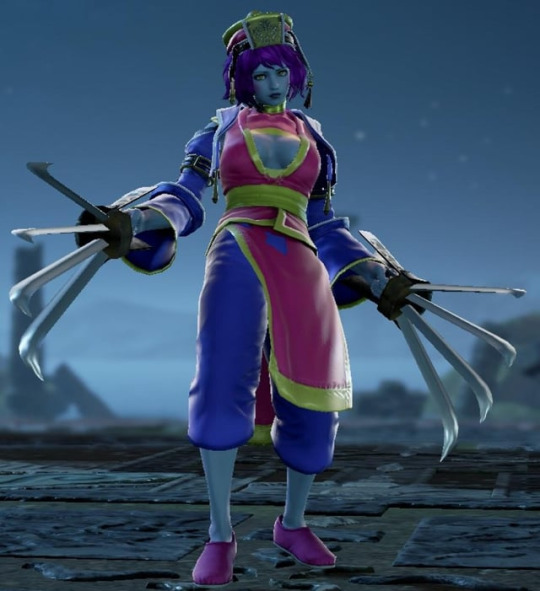
Consider what this design looks like when built in the Soul Calibur character creator - the extra details from the hat, sleeve belts, hair danglies, shoes, etc. all break up the look and make things look messy. The "same" design here just doesn't work as well, because we can't apply these same principles as well.
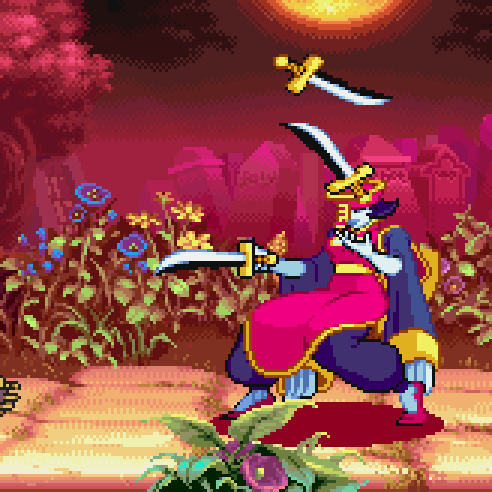
Making characters sexy is a shortcut to making them appealing, since sexy characters lean into the principles of appeal in specific ways. Sexy characters do work these core concepts of appeal, but appeal is essentially universal. The main purpose of appeal here is to convey information quickly about the character in a direct visual way. We do this through using interesting shapes, exaggerating the important details, and paring down the unnecessary extras.
[Join us on Discord] and/or [Support us on Patreon]
Got a burning question you want answered?
Short questions: Ask a Game Dev on Twitter
Long questions: Ask a Game Dev on Tumblr
Frequent Questions: The FAQ
61 notes
·
View notes
Note
I'm willing to accept that AAA games should often be sold at a higher price to help deal balance the increasing cost of development. Do you think that companies would do better to raise prices quickly and wait out the sticker-shock or to try and raise prices very slowly to attract less attention?

I'm pretty sure that, as an industry, we've mostly already moved beyond that. Haven't you noticed just how many AAA game releases these days aren't about a single sale but live service? The live service model is the price increase. The cost of development for AAA fidelity games is mostly too high now to be profitable on their own. The only real exceptions are grandfathered franchises (e.g. Elder Scrolls) and first party prestige titles to help sell systems (e.g. God of War, Sony's Spider-Man). Even former mainstays like Nintendo titles and Grand Theft Auto have embraced paid DLC, ongoing content drops, and a live service model.

Everything else is basically a live service or approximates a live service (e.g. Call of Duty's annual release) with regular content updates alongside battle passes, cosmetics, and microtransactions. Lifetime spend on these games per average player is already much higher than anything we could feasibly ask for up front. Raising prices would hurt initial sales, which would also hurt long-term earnings through the forthcoming content updates. Instead, for the bump in initial sale we offer cheap plastic toys, other inexpensive pack-ins, and maybe an in-game cosmetic and call it a "collector's edition".
[Join us on Discord] and/or [Support us on Patreon]
Got a burning question you want answered?
Short questions: Ask a Game Dev on Twitter
Long questions: Ask a Game Dev on Tumblr
Frequent Questions: The FAQ
69 notes
·
View notes
Note
How do pro consoles affect what happens to developing games if any, considering you have to make a game that also has to work on the less powerful console.
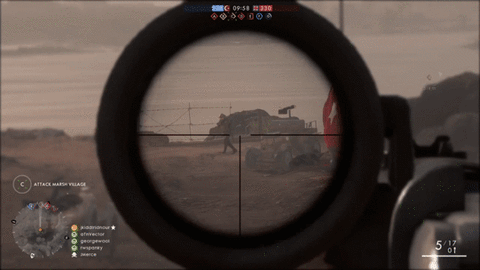
We typically have a "target" platform that we're primarily aiming at. That's what gets the majority of the work, that's what we build our stuff on. That might be the PS5, the PC, or whatever. Our target platform is typically the platform we believe will make up the largest percentage of our player base. We make all of our stuff work on that platform first and foremost. Then, we have our artists and engineers do extras and optimization (depending on the budget) for the other platforms. Most of the time that means paring things down for weaker platforms like the Switch or min-spec PCs, but it also means adding in the extra visual bells and whistles for the enthusiast PC with beefier specs and/or the Pro version of game consoles. The general priorities are, in order:
Make it work
Make it fast
Make it pretty
You can probably guess where work for the "pro" consoles fall in the priority list.
[Join us on Discord] and/or [Support us on Patreon]
Got a burning question you want answered?
Short questions: Ask a Game Dev on Twitter
Long questions: Ask a Game Dev on Tumblr
Frequent Questions: The FAQ
24 notes
·
View notes
Note
Are there any other terms you can think of (e.g. "soft lock") that are commonly misused or misunderstood by players?
The terms “Alpha” and “Beta” are probably the most commonly misused/misunderstood terms by players, mostly because of video game marketing departments. These terms have essentially become marketing terms that aren’t anywhere close to internal Alpha and Beta milestone requirements, setting weirdly unrealistic expectations in the public. During the development process, Alpha and Beta are extremely important milestones in the project.

It’s important for you to understand that the purpose of Alpha and Beta is to maximize game stability in the leadup to launch. As we approach shipping the game, the stability of the game is becoming more and more important. Any new thing that we add - a quest, a model, an animation, a texture, a feature, etc. - introduces additional instability because of how many moving parts are involved in processing each of these things. This means that Alpha and Beta become more and more restrictive as time passes when it comes to the work we do. At the end of beta, the only thing we’re allowed to fix are cert blockers.

When a project goes “Alpha”, it means that the production phase is finished. The project is dubbed “content-complete” and “feature-complete”, meaning that no more content or features are allowed to be added to the game. When a game goes to Alpha, we set our sights on fixing bugs and polishing the game experience. The more bugs we have to fix, the less we get to polish. The term “content-complete” also means that artists and designers are barred from adding or adjusting content/assets anymore - they are only allowed to make changes if the producers approve the change, which usually requires a specific bug that must be deemed important enough to make the change.

When a project goes “Beta”, the restrictions are tightened even further. The project is dubbed “code-complete”, meaning no new code is allowed in and all changes must be approved by production. The only issues that are allowed to be fixed in beta are cert-blocking bugs. Polish really isn’t allowed in beta - production values stability more than a good player experience at this point. Cosmetic or even gameplay bugs that would have been required to be fixed during production might not be if they appear during beta for fear of upsetting the apple cart. By Beta, most artists and designers are waiting in the wings in case they need to fix something critical or have been shuffled off to work on DLC or other projects. It’s mostly only engineers remaining, and even they are only allowed to touch high priority bugs.

This means that any “alpha game footage” where you see placeholder visuals really isn’t - we usually aren’t allowed to make changes to assets in Alpha. That’s usually production game footage, while we’re still working on that stuff. “Public beta tests” where the public gets to play the game and then we make changes to elements like spells, talent trees, gameplay systems, UI, etc. are actually nowhere near “beta” at all. These are not certification-blocking issues, they’re often game balance or player experience issues. Changes to those don’t happen in alpha or beta - we’re supposed to be content and code locked at that point. It’s usually in late production, when we’ve begun tightening the restrictions for stability and need more bodies to make sure that stuff isn’t broken.
[Join us on Discord]
The FANTa Project is currently on hiatus while I am crunching at work too busy.
[What is the FANTa project?] [Git the FANTa Project]
Got a burning question you want answered?
Short questions: Ask a Game Dev on Twitter
Long questions: Ask a Game Dev on Tumblr
Frequent Questions: The FAQ
249 notes
·
View notes
Text
Game Dev Glossary: Prototype, Vertical Slice, First Playable, MVP, Demo
Someone on our discord brought up a good bit of nuance in response to the Vertical Slice talk - there's a bunch of different terms for things that seem really similar. Each of the terms are the same basic concept - a demonstration of gameplay - but they each have small but important distinctions. Let's go over them here.

[Vertical Slice] - We just went over this. It's a functioning version of all planned game systems in the game working together for a representative final game experience.
First Playable - Basically the same as a Vertical Slice. Some people have some bigger distinctions between the two, the First Playable is the milestone that marks the end of preproduction and the beginning of production.

Prototype - A playable example of a single gameplay system to prove out the concept. Examples might be character movement, a combat combo system, or a specific game mechanic. The above screenshot is from the Breath of the Wild systems prototype - wind, fire, etc. was modeled in this prototype before being translated to the 3D game world.

MVP - Minimum Viable Product. The absolute bare-bones critical path minimum of whatever deliverable we're working on that meets acceptance criteria. This can refer to the whole game or a specific chunk of work we're doing (e.g. a specific system, a feature, etc.).
Demo - A stripped-down build of the game for exhibition, either for executives, tradeshows, or public-facing. Split into pre-release demo and post-release demo, with the post-release demo being easier to deal with.
[Join us on Discord] and/or [Support us on Patreon]
Got a burning question you want answered?
Short questions: Ask a Game Dev on Twitter
Long questions: Ask a Game Dev on Tumblr
Frequent Questions: The FAQ
39 notes
·
View notes
Note
What are some ways AAA studios and publishers could feasibly lower the costs of producing videogames without laying off people?
The big issue is that the vast majority of the costs in game dev are in the salaries for people doing the work. There's really only a few ways the industry can feasibly cut costs - either companies don't hire as many people, enact sizable pay cuts for employees, or both.
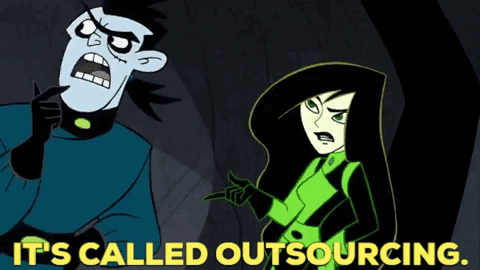
Game publishers have already been pushing in the direction of avoiding hiring where they can. There's a large quantity of work currently being outsourced to external third-party studios in places like Southeast Asia and Eastern Europe because the labor is cheaper. Many companies have also been looking at utilizing generative AI and other new workflows to reduce the headcount needed to produce games.

The other option is to enact pay cuts. This does reduce costs without layoffs, but it tends to be unpopular among companies. Most companies don't like doing pay cuts because it tends to push the top performing workers out of the company and it makes hiring new workers difficult. If I knew I was one of the biggest contributors to the team and my pay got cut by 25%, I would seriously consider taking my contributions to another company that would pay me what I feel I am worth. Further, it makes eventually hiring new workers more difficult if the salary band for a given role is lower than competing companies. Why would a candidate come work for Company A when Company B is paying 20% more?

This is probably where most laymen will point at cutting executive salaries as a possible solution, but that isn't super feasible either. Executives are primarily (more than 85%) paid in stock, not cash. Stock compensation comes with major constraints like vesting time and restricted selling windows, primarily to prevent insider trading, but the biggest issue with stock compensation is that people can't spend stock to buy groceries or pay rent. Most people need to be paid in money.
[Join us on Discord] and/or [Support us on Patreon]
Got a burning question you want answered?
Short questions: Ask a Game Dev on Twitter
Long questions: Ask a Game Dev on Tumblr
Frequent Questions: The FAQ
15 notes
·
View notes
Note
These references are out of date so I hope you'll bear with me. Why is it games like Watchdogs 2 can have a whole citty full of NPC's each with mostly unique profiles and interactable (you can hack almost everyone, you can physically interact, etc). But something like Yandere simulator struggles with keeping a frame rate with not even 200 NPC's. The models in Watchdogs 2 are also more hyper realistic so I don't know if that means more framerate impaction?
What you're seeing are the programming principles of optimization and scalability in effect. These two principles are more than the sum of their parts, they are multiplicative in their effectiveness (or lack thereof). Thus, if there's a situation where we need to optimize at scale, the results are very pronounced. When we talk about performance, it helps to think of it as costs to do things. We spend system resources (CPU time, GPU time, system memory, etc.) to perform tasks (load a dude, draw a dude, animate a dude). Optimization is being clever about not wasting our resources doing unnecessary things. This lowers the cost of performing these tasks. Scalability is the other factor - the number of things there are multiplies their overall costliness. This should make intuitive sense.

Let's have an example - imagine that you need cupcakes for a party. The cupcakes cost $5 each and there's a $20 flat delivery fee. We need five cupcakes for a party, so the cost is $20 (delivery) + $25 (5 cupcakes x $5) for a total of $45. Optimization is our way of reducing the individual costs. We can optimize either the cost of the cupcakes or the cost of the delivery fee. Maybe we can optimize the delivery fee down to $10 but can only optimize the cupcake cost down by $1 each. We only have time to choose one optimization. In this case, optimizing the delivery fee results in a better overall cost reduction - 5 cupcakes x $5 apiece + $10 delivery is $35, while 5 cupcakes x $4 apiece + $20 delivery is $40.
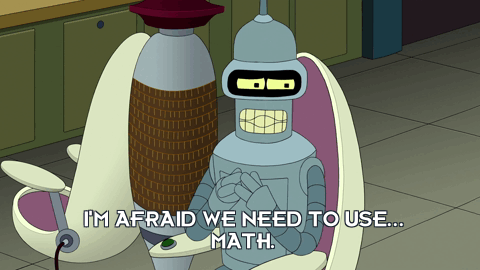
Now think about what happens if the numbers change. Instead of needing five cupcakes for the party, let's say we need a thousand cupcakes. 1,000 cupcakes x $5 apiece + $20 delivery = $5,020. If we optimize the delivery fee, the cost becomes 1,000 cupcakes x $5 + $10 delivery = $5,010. Here, optimizing the cupcake price is a much better deal than optimizing the delivery fee! If we reduce the price per cupcake by $1, we get 1,000 cupcakes x $5 apiece + $20 delivery fee = $4,020.
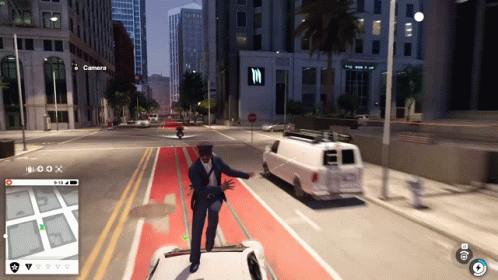
Bringing this back to games, it should make sense now. Ubisoft spent a lot of engineering time optimizing the cost of each NPC (cupcake) down as much as possible because they knew that they would have a huge number of them in their game world. Yandere Simulator did not spend as much time optimizing their NPCs, so their NPCs are more costly than the WatchDogs NPCs.
[Join us on Discord] and/or [Support us on Patreon]
Got a burning question you want answered?
Short questions: Ask a Game Dev on Twitter
Long questions: Ask a Game Dev on Tumblr
Frequent Questions: The FAQ
24 notes
·
View notes
Note
This is more of a legal question than anything, But there is this old game that was on the gamecube that my brother and I played when we were kids, The developer and the publisher both went out of business, if I were to figure out a way to port the game to UE5 and release it for free, would I get in trouble or since I would be doing it for free would I be legally in the clear?
Standard disclaimer - I am not a lawyer, this is not legal advice. I am only a game dev speaking from my experience as a game dev about a hypothetical situation.
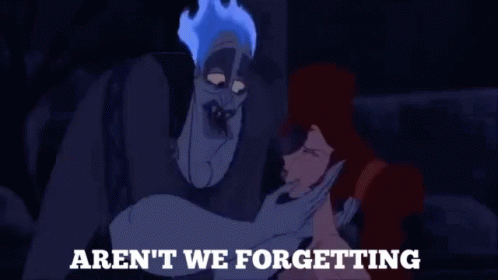
Even if the developer and publisher have gone out of business, somebody probably still owns the rights to the game. If you remake an existing game using their assets and/or copyrighted material, you are still using somebody else's IP without the owner's permission and that's illegal. It does not matter whether you charge for it or not, you are still potentially causing damage to someone else's property. The recent hullabaloo about AI-generated porn of Taylor Swift wasn't a big deal because someone charged for it, it was because someone made and distributed it without her permission.

If you want to remake a favorite game, my advice is always to make a spiritual successor to that game - make the new game feel and play like the old game as much as you want, but don't use the old characters/story/world/etc. Somebody owns those and that owner would be fully within their rights to stop you if you use them... but they can't do a thing if you don't use them. Make your own thing. It's a lot better for all around - players will actually be able to play your game, you'll be able to showcase your game, and you can choose either to sell it to or use it to get hired by paying game studios/publishers.
[Join us on Discord] and/or [Support us on Patreon]
Got a burning question you want answered?
Short questions: Ask a Game Dev on Twitter
Long questions: Ask a Game Dev on Tumblr
Frequent Questions: The FAQ
22 notes
·
View notes
Note
I've heard from friends that there's no reason for companies to shut down game/store servers because "it doesn't really cost them anything to keep it up", which feels wrong to me given how readily console makers are to close up features of older consoles that wouldn't conflict with newer ones. Is upkeep really that cheap?

Here's the thing - your friends are kind of right but also mostly wrong at the same time. In terms of technology and such, they are correct - running a server process in the cloud today is pretty cheap. We pay for how much CPU time our processes end up using and old games don't use up that much since there aren't that many players, so the cost of running the server itself is not that high.
However...
There are significantly more costs to running a game (especially a service game) than simply keeping the server running. That's where your friends are wrong.

Imagine, for example, a longtime player gets hacked and the hacker deletes her character and items. What is the player's recourse? Submit a ticket to customer service and get it resolved, right? Now we need to keep at least one customer service agent on the service to handle things like refunds, user mistakes, and so on. What if the server crashes? We'll need somebody to handle server maintenance. What if somebody discovers an exploit that severely harms the player experience? I guess we need a programmer who knows how to fix things. If there's any development to be done, there will also need to be production (to keep tasks prioritized and tracked) and QA (to validate fixes).

Remember, the vast majority of the costs of game development are the salaries and benefits paid out to the people working on and maintaining the game. Even a small skeleton crew costs hundreds of thousands of dollars per year in salary, benefits, taxes, equipment, rent, and so on. So... upkeep for the server processes really is that cheap. But keeping an entire game running is absolutely not that cheap. When the service can't afford to pay for its own upkeep - including the salaries of all of the people needed to keep the service running - then it gets shut down.
[Join us on Discord] and/or [Support us on Patreon]
Got a burning question you want answered?
Short questions: Ask a Game Dev on Twitter
Long questions: Ask a Game Dev on Tumblr
Frequent Questions: The FAQ
203 notes
·
View notes















